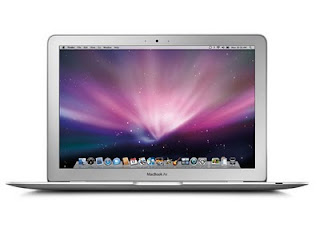Though it essentially uses the same body as the 450D, it shaves a couple of grams of the weight; it only weighs 450 grams. Its smooth, plastic body still feels a little on the cheap side, and we're not crazy about the grip. We can't quite put our finger on the reason; it's not especially shallow, and Canon has improved it over the 400D's by giving it a more rubbery-feeling cover. Still, we don't find it as comfortable to hold as most other dSLRs. Almost all the buttons lie under your right hand, and each feels slightly different so that you can grope them without looking. None require two-handed operation; when you push the button to change ISO, white balance, metering and so on, the menu persists while you navigate the options.
The biggest operational advantage the 1000D offers over competitors is My Menu, which, unlike some other features, it inherits from higher-end models. With My Menu you can build a go-to-list of the most frequently accessed menu settings — in our case, for instance, Format and Live View settings. However, like the 450D, the menus can be — irritatingly — a little inconsistent and sometimes dumb. For instance, you can change ISO sensitivity with either the dial or the navigation buttons, but can only navigate metering choices via the navigation buttons. Also, in some cases, when you have two columns to navigate, as with Picture Style settings, it doesn't let you navigate to the right or left; you must navigate all the way down the first column to get to the settings in the second.
But, we consider the AF indicators in the viewfinder the most annoying aspect of operating the 1000D (this was true in the 450D, as well). The AF indicators are tiny red dots that briefly flash when focus locks. They're neither persistent nor large enough to be easy to spot, so we frequently found ourselves having to prefocus several times to make sure that the spot was on the correct subject and that it was focused. As you can imagine, it slows shooting a bit. Is it more annoying than the faint focus lines Sony uses? We think so.
Features
For the most part, the 1000D offers a solid set of entry-level specs: 10-megapixel, APS-C-size, CMOS sensor (for Canon's traditional 1.6x focal-length multiplier) and 7-point user-selectable autofocus system. That falls behind the Nikon D3000's 11-point AF system and the 9-point AF in the Sony Alpha DSLR-A230. We also mark the switch from CompactFlash to SD/SDHC in the plus column. Also, like the 450D, the 1000D includes Canon's Auto Lighting Optimiser, which automatically adjusts contrast and brightness in case the image you captured isn't quite perfect. Introduced in the 40D, the Auto Lighting Optimiser is now available in all exposure modes and employs face detection to prevent the underexposure of backlit faces we complained about in the 400D. Remaining specifications are in line with the 450D. For example, shutter speeds range from 30 seconds to 1/4000th of a second, with a flash sync speed of 1/200th of a second, and the camera employs a 35-zone TTL-metering system. Canon also offers the BG-E5 battery grip. On the other hand, the 1000D lacks common perks Sony, Pentax, and Olympus include in their cameras, like in-body mechanical stabilisation and a wireless flash controller in the body — a feature that we occasionally find quite useful. The inclusion of an image-stabilising lens in some of the kits doesn't quite compensate, since additional optically stabilised lenses tend to cost more in the long run. The 1000D's sensitivity range also tops out at ISO 1600, whereas some others go to ISO 3200 (but those models generally don't have usable photo quality at that level). Though it offers a Live View shooting mode with contrast-detection AF, Live View's usefulness is limited without support from an articulating LCD, and it functions too slowly to be of any use with live subjects. Furthermore, all the manufacturers seem to incorrectly think that the equivalent of Canon's Picture Styles — custom contrast, sharpness saturation and colour tone — are more important in this market segment than the capability to save groups of custom exposure, white balance, metering, drive-mode settings, and so on. Our biggest peeve, though, is the lack of a spot meter — not even the huge four per cent spot from the 450D. Another attribute of the 450D that the 1000D lacks is the Highlight Tone Priority mode, which helps preserve detail in the brightest portion of a scene. And the 1000D has a 2.5-inch LCD compared with the 450D's 3-inch version — the A200 and K200D have 2.7-inch LCDs. Performance Overall, in CNET Labs' tests the 1000D outperforms all but the Nikon D60 for shooting speed. It goes from power-to-photo in a bit less than 0.2 second. At 0.4 second in good conditions, the 1000D's JPEG-shooting lag matches the rest; its 0.8 second duration in dim conditions is quite good for any class — just a bit slower than the D60 and inexplicably far better than the 450D. Once focused, shot-to-shot time typically takes about 0.7 second for RAW shots. Oddly, JPEG shooting is a much faster 0.4 second — these days there's typically no difference between RAW and JPEG speed in dSLRs. Adding flash-recycling time bumps it to only 0.8 second, which is also very good for any class, and is the same as the D60. Burst JPEG shooting outpaces all but the K200D, however that camera is limited to about five shots per burst whereas the 1000D goes to at least 85. It's pretty close to the D60's burst rate, however. Shooting RAW slows down after three frames and, like the 450D, maxes out at six frames; you'll have to move to another class of camera if you take shooting your childrens' soccer games really seriously.




0 comments:
Post a Comment